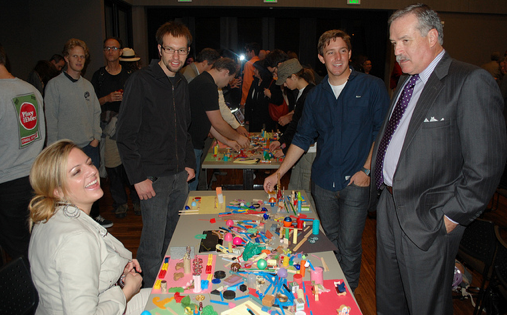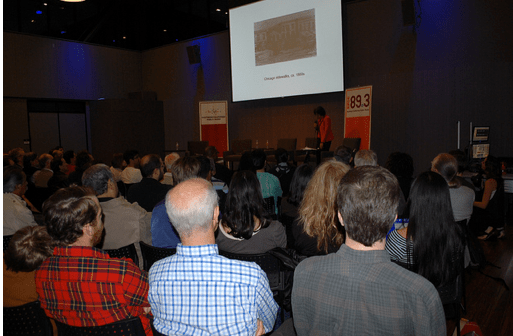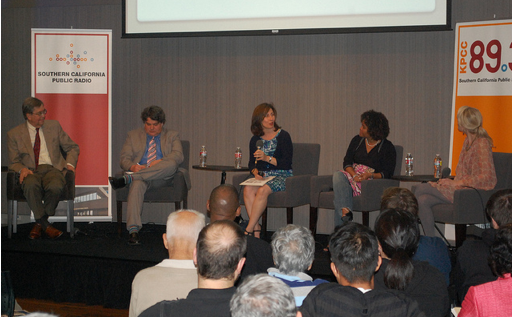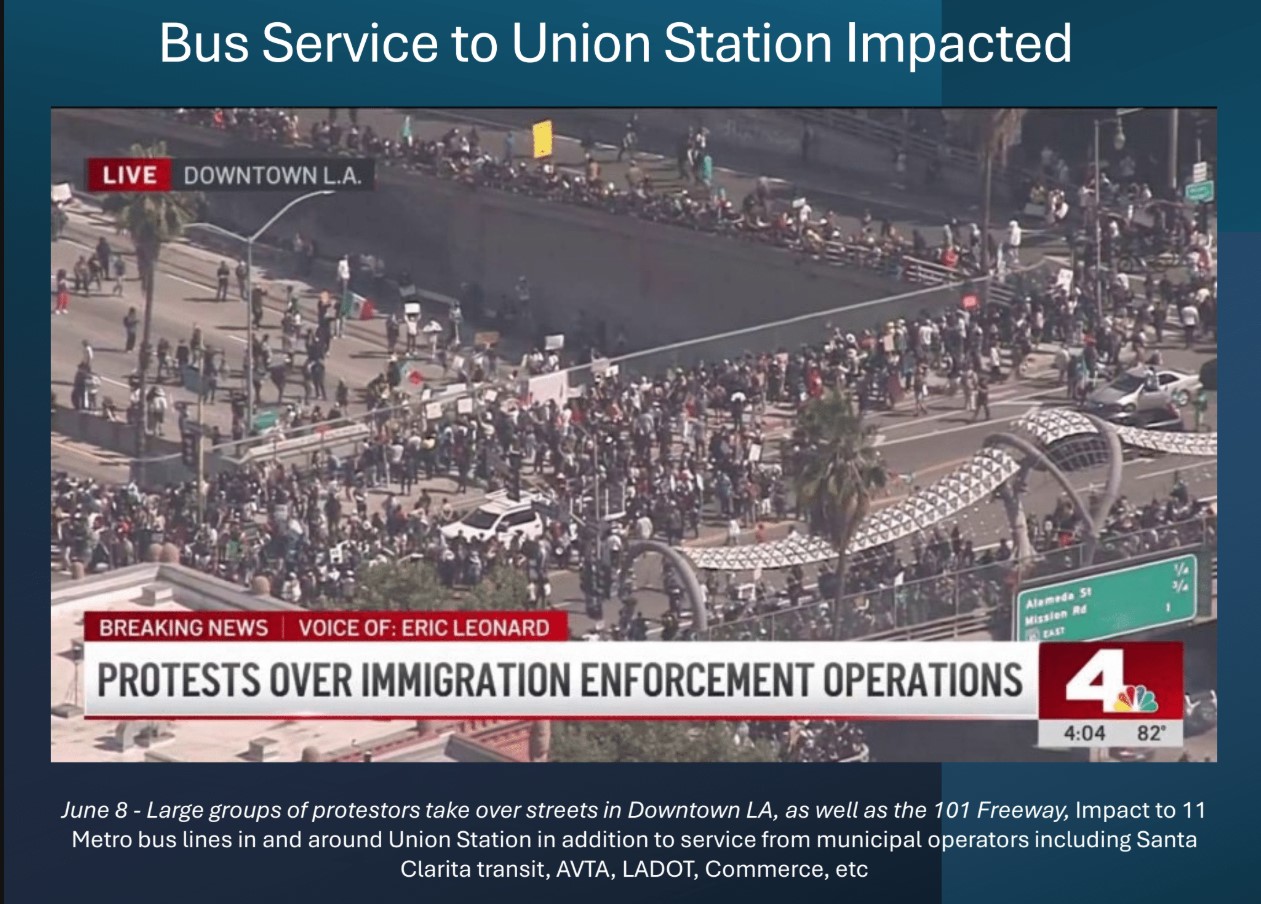
Last night's event, "Planning the Future of Our Streets" was a smashing success. Over 100 people packed the Crenshaw Family Forum for a symposium and interactive planning session. Our thanks go to all the presenters, Anastasia Loukaitou-Sideris, James Rojas, Mayor Bill Bogaard, Mark Gangi, Linda Immediato, Felicia Williams, and Erlinda Romo, the staff of KPCC that handled the logistics and CICLE, Pasadena Magazine, KPCC and the American Institute of Architects for bringing out such a great crowd.
James Rojas took much better notes than me, and his review of last night can be found directly below this sentence.
Pasadena’s Streets and Sidewalks in the Hands of the People.
Last night dozens of participants created new ways to use and design Pasadena’s streets and sidewalks at KPCC’s Crawford Family Forum Radio Station.
The evening started with a historical overview of sidewalks by Professor Loukiatou-Sideris. This gave participants plenty to think about.
Next followed a one-hour community interactive workshop that allowed participants to self-reflect on Pasadena’s streets and sidewalks. Participants were asked to design their ideal street and sidewalk in twenty minutes based on their personal knowledge, experiences, and needs. Twenty minutes was a good time frame because it allowed the participants to think on their feet and not become wetted to their ideas.
Nine tables were set up around the room to accommodate the participants.
Each table had colored construction paper, and a medley of vibrant, recycled and material to provoke creative thinking. This creative method turned Pasadena into a canvas where people built their image of the city. The thousands of small colorful, vibrant, tactile, objects triggered the builder’s emotional connections to the environment. By seeking and touching these objects participants mimicked how they experience streets and sidewalks. By using non-represent objects people were forced to be creative. Green yarn becomes grass, aqua plastic beads became Colorado Boulevard, and pink hair rollers become apartments or office buildings along it.
Participants were given a rough criteria: How do they use the streets? What is the feel of the street? And what should street look like? There were no scale, maps, pictures, and no wrong or right answers, only that everybody was required to create a 3 dimensional model.
Through this exercise participants investigated and discovered their relationship with Pasadena’s streets and sidewalks through arranging the objects. They created small vignettes of urban life. Participants gained the greatest satisfaction from this process because they were able to translate memories, visions, and ideas from their mind into a physical form. Participants had an epiphany when they discovered what creates their ideal street.
After the twenty minutes were up the participants had one minute to explain their idea using the model to the group. One minute kepted up the pace of the exercise.
Since people interjected their own personal experiences, memories, and random thoughts of places real and imagined, this became the most interesting part of the process. This allowed everyone to publicly bond, and engage in the process.
It was powerful to watch the participants have so much emotion and conviction about their pubic spaces. The participant’s everyday experiences drove their ideas for Pasadena streets.
The array of approaches participants used to solve the design challenge was fascinating. Each participant solved the task in his or her own terms. Some designs were ideal based; “I think Colorado Boulevard should have more mix-use.” Some designs were conceptual; “Streets and sidewalk should be multi-leveled.” Some are designs are specific and literal; “I added a adult jungle gym on my street”. Some designs capture an experience; “The is a city beautiful street full of vistas.” Some designs illustrate a solution to a problem; “This water management system should be incorporated in street design.’ All these solutions are valid and great a rich venue to solve planning problems.
This method drew out people’s ideas by taping into their emotions by making planning visual, tactile, and playful. It simplified the planning process so that everyone could participate. Barriers between people were removed because everyone created and built in a safe space where there are no right or wrong answers.
Language, age, income, education, or prior planning knowledge did not matter because the median created an equal playing field between all participants. In fact the more diverse the participants the more interesting was the discussion.
Community members rarely have the opportunity to come together interact, play, and reflect on their planning values and needs. This activity reflected how varied groups of players—strangers, neighbors, friends—interacted to create a sense of place on Pasadena’s streets and sidewalks.








